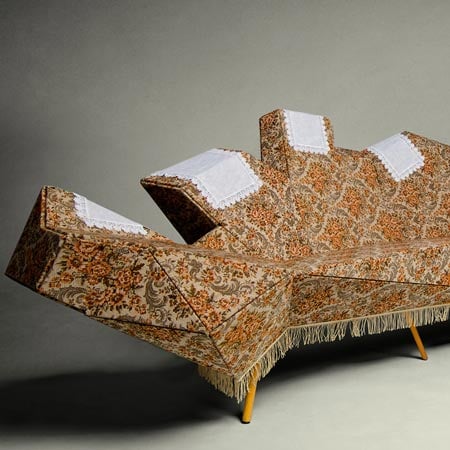
Cozy Furniture by Hannes Grebin
German designer Hannes Grebin has created a range of living room furniture based on 1970s German domestic decor.
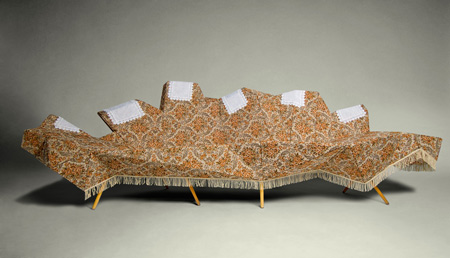
The bizarre, angular forms are covered in patterns and detailing which Grebin claims were commonly found in German living rooms during the 1970's.
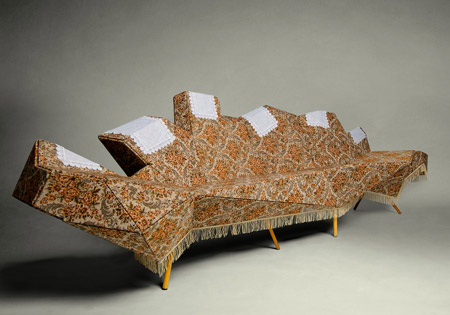
He describes the pieces as "living sculptures, which puts the traditional views about comfort and taste into question."
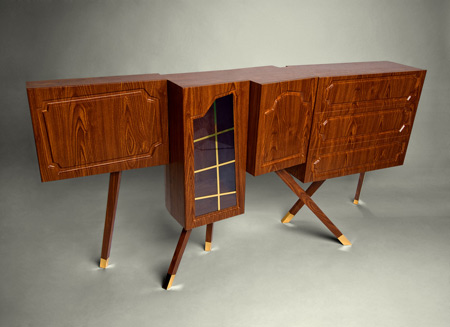
The collection includes a sofa, arm chair, sideboard, rug and pendant lamp.
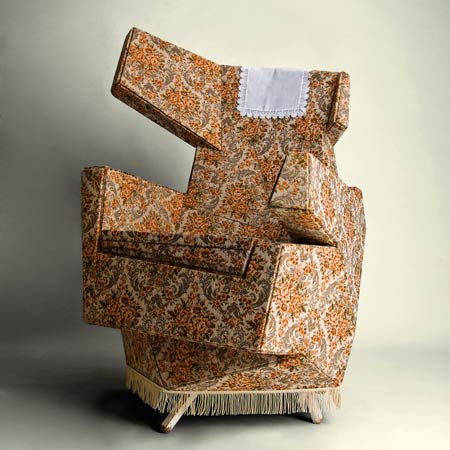
Grebin completed the project in October while studying product design at the Bauhaus University in Weimar, Germany.
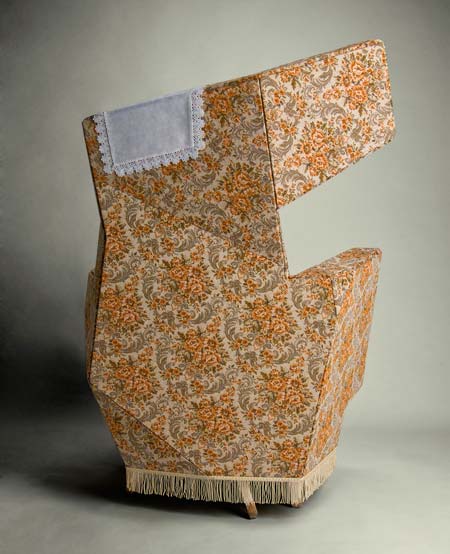
Here's some text from the designer:
--
I was determined to make a complete redesign of the "German parlour/living room". I limited the furniture range to the 6 archetypes of the ordinary German living room, the couch, the arm chair, the carpet, the wall unit, the ceiling lamp and finally the traditional German tile table (just now in design phase).
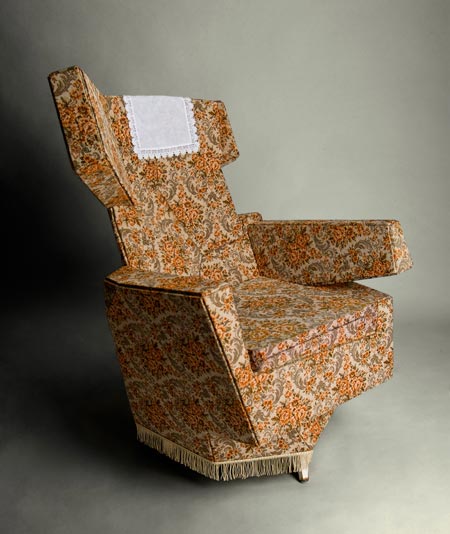
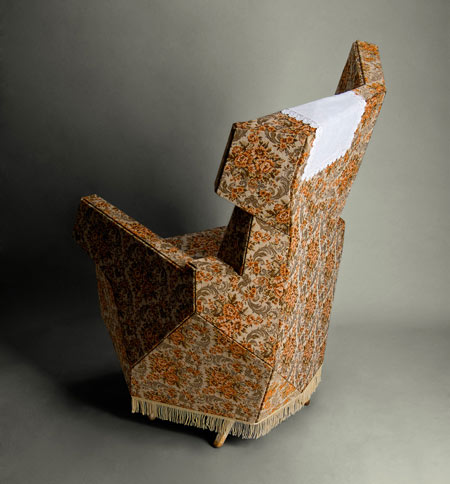
Therefore, in an experiment I tried to dissect the familiar image of Cosiness like in movies or television, this very illustrative Cozy of the German 70s, to creatively rearticulate it. I wanted to dissolve the otherwise clear symmetry of furniture and it's just visually coded function (A couch looks like a couch - is a couch ...) .
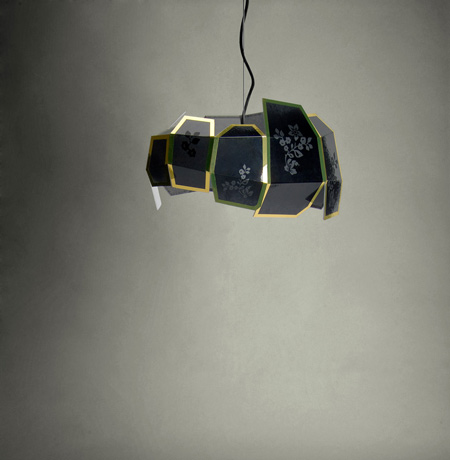
The respective original object shouldn't be reduced just to absurdity. I rather "zeroed" its geometry or sometimes I only rearranged it. A precise assignment of functions of the resulting un-or non-forms is now only possible through their texture (fabric) or applications (fringes, patterns, lace doilies), which are radiating neatness and a certain familiarity in spite of the predominant geometric dissonance. This creates the very disturbing effect of these. Despite its fractal and asymmetric geometry the furniture perfectly meet the demands of ergonomics. Thus I wanted to erupt from the everlasting symmetry of furniture.
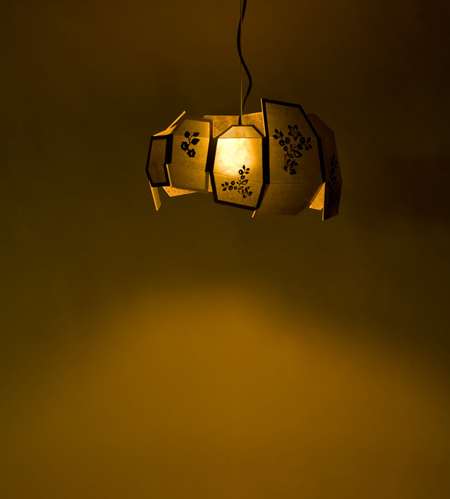
Furthermore I can't actually understand why at the current state of the techniques hardly one designer is experimenting sculpturally. It seems as if the opportunities offered by a sculptural, process-oriented, generated and unique furniture design (guided by "Design on Demand", e.g. "Sinter Chair", O. Vogt, H. Weizenegger) today, if ever, are to be explored somewhere in scripting ( "Vendome", C. Weisshaar, R. Kram).
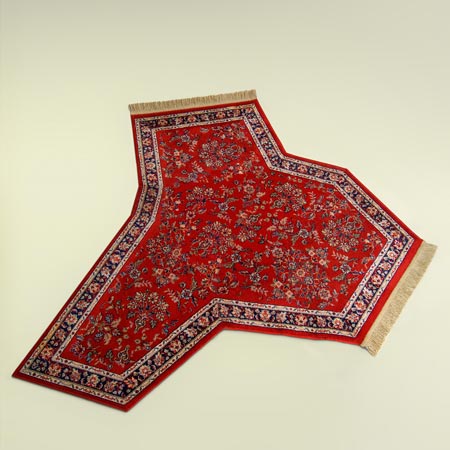
Quite differently, in my approach/production pipeline I've integrated a deliberately traditional modeling with clay as part of my design work and for a start I would like to place this project under the hybrid term of "digital craft" or "NEOCRAFT" .
And also in relation to a possible production of the pieces, especially in the current production discourse on craftsmanship, I can very well imagine a craft production.
Ultimately, it should be mentioned, that I didn't want to make just furniture. I't was much more important for me that although all objects work excellent as individual pieces, just in the specific arrangement of the "German living room, the design objects become objects for discussion, in order to lead the theoretical design discourse to new ways and approaches.
In my defense my supervising professor considered all of my designs as a "disciplined joke". That frankly falls a bit short for me
"Perser", oriental carpet
The carpet is an interpretation of the classical Persian rug. Just as all the other objects it is playing with the distressing effect reached by the contrast of broken geometry and square, retro texture, as it acts as a medium of coded experience values.
"Deckenleuchte", ceiling lamp,
Revised, cleaned up version of a ceiling lamp from an ordinary german living room
"Schrankwand-Sideboard", sideboard
To keep up with the times, and because today less is more, the wall unit as a florid storage system is overtaken and substituted by a sideboard. This piece of furniture is an arrangement of four different functional parts of a rustic wall unit for the purpose of German period furniture. To the formative tenor from deliberate, geometrical dissonance is also corresponded here.
"Spießer-Sofa", couch,
With its 4 meters in length, the couch is the heart of this cosy ensemble. Here the popular image of comfortable seating is alienated, and merely by its texture and applications (lace doilies, fringes) its function becomes conceivable.
"Ohrensessel", wing chair,
In spite of hard edges, a very pleasant seating. By composite construction and stuck upholstery fabric with flower pattern "Cosy Hard Edge" is entering the living room. Through my diploma I concerned myself with the subjects of cosiness, the typical German living room and bourgeois pieces of furniture. Applications like lace doilies and fringes both live of the comfortable character and encouraging the irritating image.